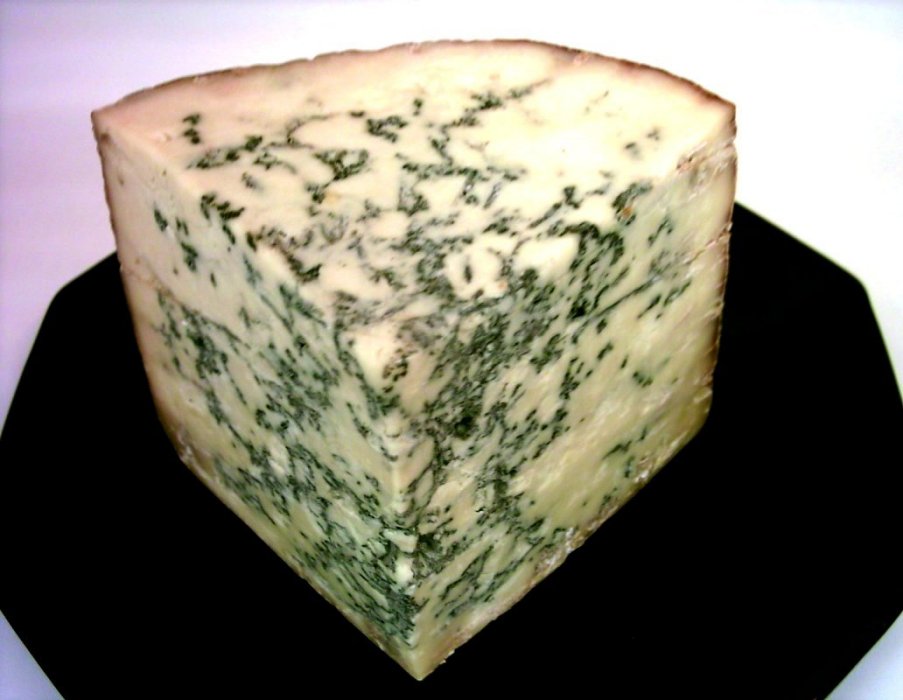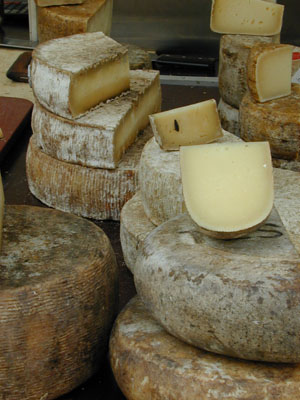7000 Year Old Cheese
Interview with
This week, scientists have uncovered residues of 7,000-year-old cheese. Chemist Professor Richard Evershed from the University of Bristol is one of the authors of a paper in the journal Nature this week which describes how he and his team have made this rather milky discovery.
Chris - So, how did this story begin?
Richard - Well, it began truly about 30 years ago when one of our co-authors, Peter Bogucki, was putting together evidence from sites he'd been excavating with colleagues in Poland where they've been uncovering these perforated pot shapes, ceramic pot shapes and he propounded a theory based upon those pot shapes that they were basically cheese strainers and started to develop the idea that these early farmers, which is the Linearbandkeramik culture, were dairy farmers.
Chris - When you say they were perforated pots, we're talking clay pots with fairly substantial holes drilled in them, rather like a top of a pepper pot?
Richard - Very numerous holes, if you look at the images  that are in the article. They're all over the vessels. They look like a sort of small colander.
that are in the article. They're all over the vessels. They look like a sort of small colander.
Chris - Obviously one can say they look like the kind of thing that modern-day people use to strain cheese, but just because they look like it doesn't mean they definitely were being used to strain cheese. Is there anything else they could've been used for?
Richard - That's right and in fact, we've had an interest in identifying dairy products from the archaeological record for a number of years. These vessels were one of the major sources of sort of typological evidence, but I must admit, I've been rather sceptical and I'd often said in my lectures, but surely, this could've been used for straining anything.
Chris - So, how did you approach dealing with this and trying to find out what they really were used for? How did you discover cheese?
Richard - This is where the two studies collide. Our research, going back about 12 years now has been focusing on looking at the origins of dairy by looking at the pottery vessels, usually cooking vessels. We've developed a methodology, a chemical method which allows us to identify milk fat. It's based upon the fact that animal fats, which are the most common type of organic residue you find in archaeological pottery when you study pottery from Europe, can be identified through their fatty acid signatures. Based upon studies that we've done, studying many modern animals, we've developed a very robust proxy which allows us to separate ruminant, carcass fats from dairy fats, pigs, horses can all be separated. So we can quite constantly identify different fats. So if we go into archaeological pottery, recover the residual fats in there, we can identify these fats quite unambiguously as to whether they're dairy fats or carcass fats.
Chris - These pieces of pottery have been in the ground in this site in Poland, in the centre of Poland for 7,000 plus years.
 Richard - It's remarkable, isn't it? Yes.
Richard - It's remarkable, isn't it? Yes.
Chris - And you can get fats out of them, that were from the cheese or the dairy products these people were working on?
Richard - Absolutely. It never ceases to amaze me. It's due to the fact that these fats are preserved deep within the fabric of the pottery and I imagine that they go into sort of molecular size pores in the alumina silicate matrix where they're protected from say, bacteria getting in there to degrade them. And in the right sort of soil types, they're protected from leeching from under the pottery by ground water.
Chris - So, you've got specimens of the pots, you took small samples which enables you to isolate these fats. What do those fats tell us then? They say that there was dairy material in these pots?
Richard - That's right and just to clarify, we're not only focusing on these cheese strainer vessels. We've looked at a large number of other vessel types from the site and quite specifically, what it shows is that these perforated vessels, these putative cheese strainers are the ones that contain dairy fats. And so, if you then start to put this together this as like a forensic exercise, we've got dairy fats associated with perforated vessels and you start to ask yourself the question: What other milk processing activity could you reasonably have been doing which required you to strain some sort of milk product? Well, it's cheese making. There is no other milk processing activity that uses a straining activity.
Chris - Why do you think these people wanted to make cheese?
Richard - Well, there's two motivations. One, you would be producing - if you had a substantial dairy herd as the animal bone assemblages from these sites seem to suggest - you would have surplus of milk at certain times of year, in the summer time for instance. So, the production of cheese would've been a way of producing a non-perishable product that you could then preserve throughout the year so you could just take full advantage of the nutritional properties of milk in the winter time. But there is another critical factor and this is where Peter Bogucki comes back into the story with his paper from the 1980s. It's related to this lactose intolerance phenomenon. It's very likely, almost certain that these early farmers were lactose intolerant, so they would, potentially, have got quite poorly, had they been drinking substantial amounts of whole milk. So, it looks like this straining activity was perhaps the recognition of this and they had found a way of getting around the lactose intolerance problem. What you're doing when you separate the curds from the whey, the whey contains the lactose. So you're actually producing a lactose reduced product when you produce cheese and thus, lactose intolerant farmers would've been able to exploit the nutritional qualities of milk.
For more on cheesemaking, check out the
Naked Scientists Scrapbook:










Comments
Add a comment